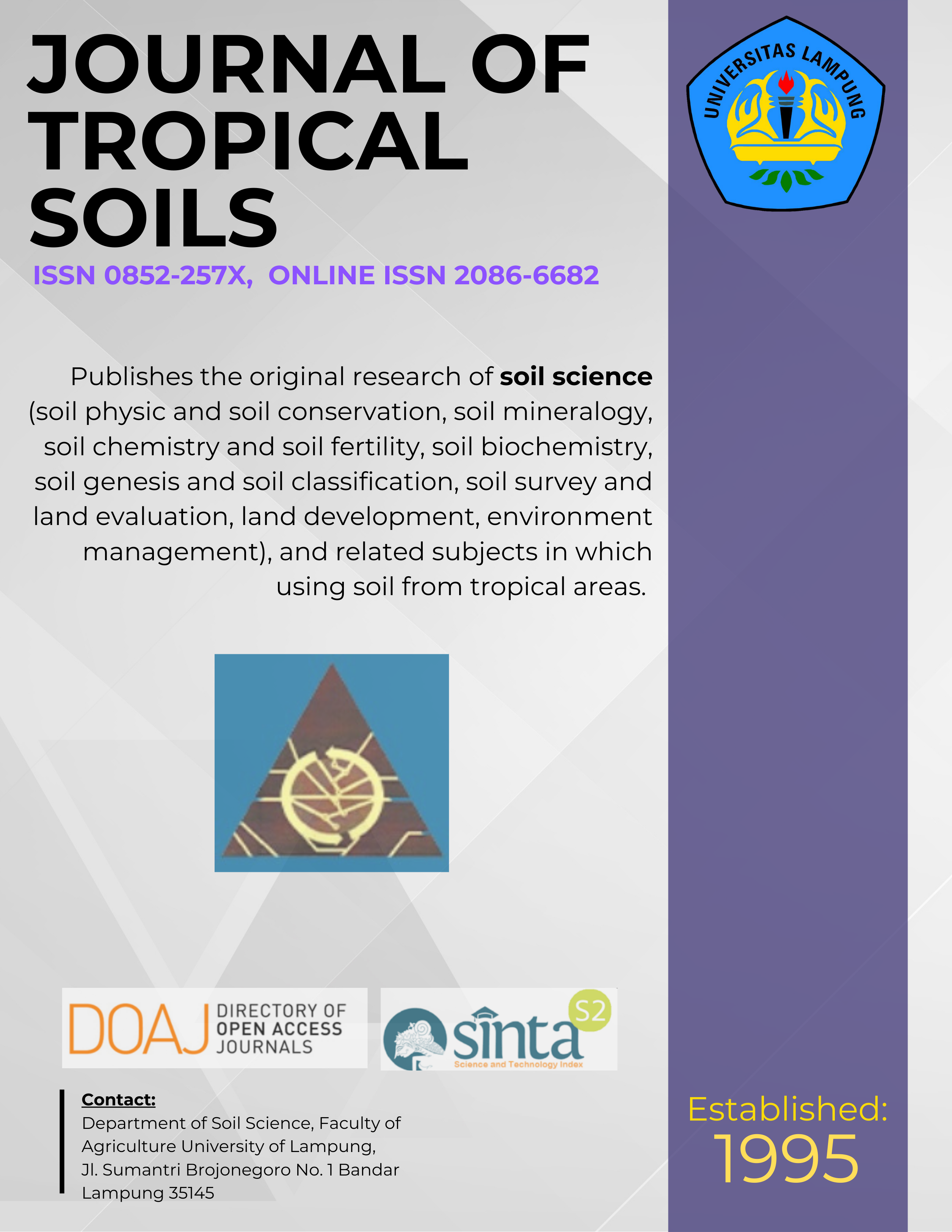The Study of Abundance of Soil Minerals on Micro Toposequen of Karst Gunungsewu Pegunungan Selatan
Main Article Content
Abstract
Landform of Gunungsewu karst topography dominated by positive forms consists of hills and negative forms of dolines. On the micro toposequen of karst,  most of dolines dominated by red soils which hue 2.5 YR – 5 YR, whereas on hills by soils which hue 5 YR – 7.5 YR. The aim of research was to study of soil minerals status on karst micro toposequent. Results showed that soil minerals of sand fraction on dolines dominated by quartz, opaque, and iron concretion, whereas on hills dominated by labradorite, and mafic minerals. Clay minerals on doline dominated by kaolinite whereas on hills by halloysite. The high concentration of kaolinite, quartz, opaque and iron concretions of soils on dolines appropriate with degree of soil weathering which in a line with decreasing of soil pH, silt/ clay ratio, and hue of soils on dolines redder than hue of soils on hills. The origin of soil parent material suggested come from volcanic materials.
Downloads
Download data is not yet available.
Article Details
Issue
Section
Articles
License for Authors
Authors who publish with this journal agree to the following terms:
- Authors retain copyright and grant the journal right of first publication with the work simultaneously licensed under a Creative Commons Attribution License that allows others to share the work with an acknowledgement of the work's authorship and initial publication in this journal.
- Authors are able to enter into separate, additional contractual arrangements for the non-exclusive distribution of the journal's published version of the work (e.g., post it to an institutional repository or publish it in a book), with an acknowledgement of its initial publication in this journal.
- Authors are permitted and encouraged to post their work online (e.g., in institutional repositories or on their website) prior to and during the submission process, as it can lead to productive exchanges, as well as earlier and greater citation of published work (See The Effect of Open Access).
License for Regular Users
Other regular users who want to cite, distribute, remix, tweak, and build upon author’s works, even for commercial purposes, should acknowledge the work’s authorship and initial publication in this journal, licensed under a Creative Commons Attribution License.
How to Cite
The Study of Abundance of Soil Minerals on Micro Toposequen of Karst Gunungsewu Pegunungan Selatan. (2008). JOURNAL OF TROPICAL SOILS, 13(2), 161-170. https://doi.org/10.5400/jts.2008.v13i2.161-170

